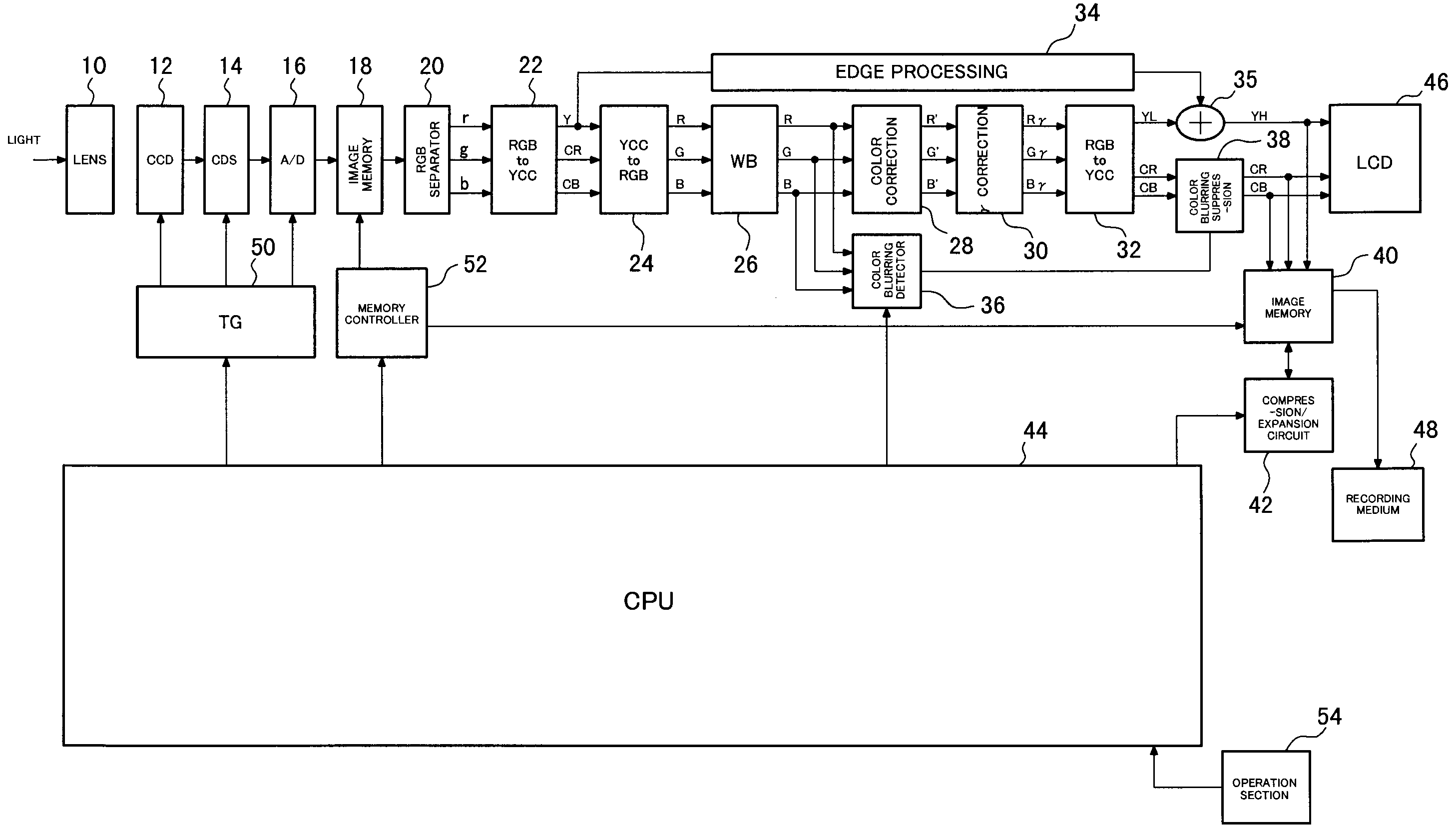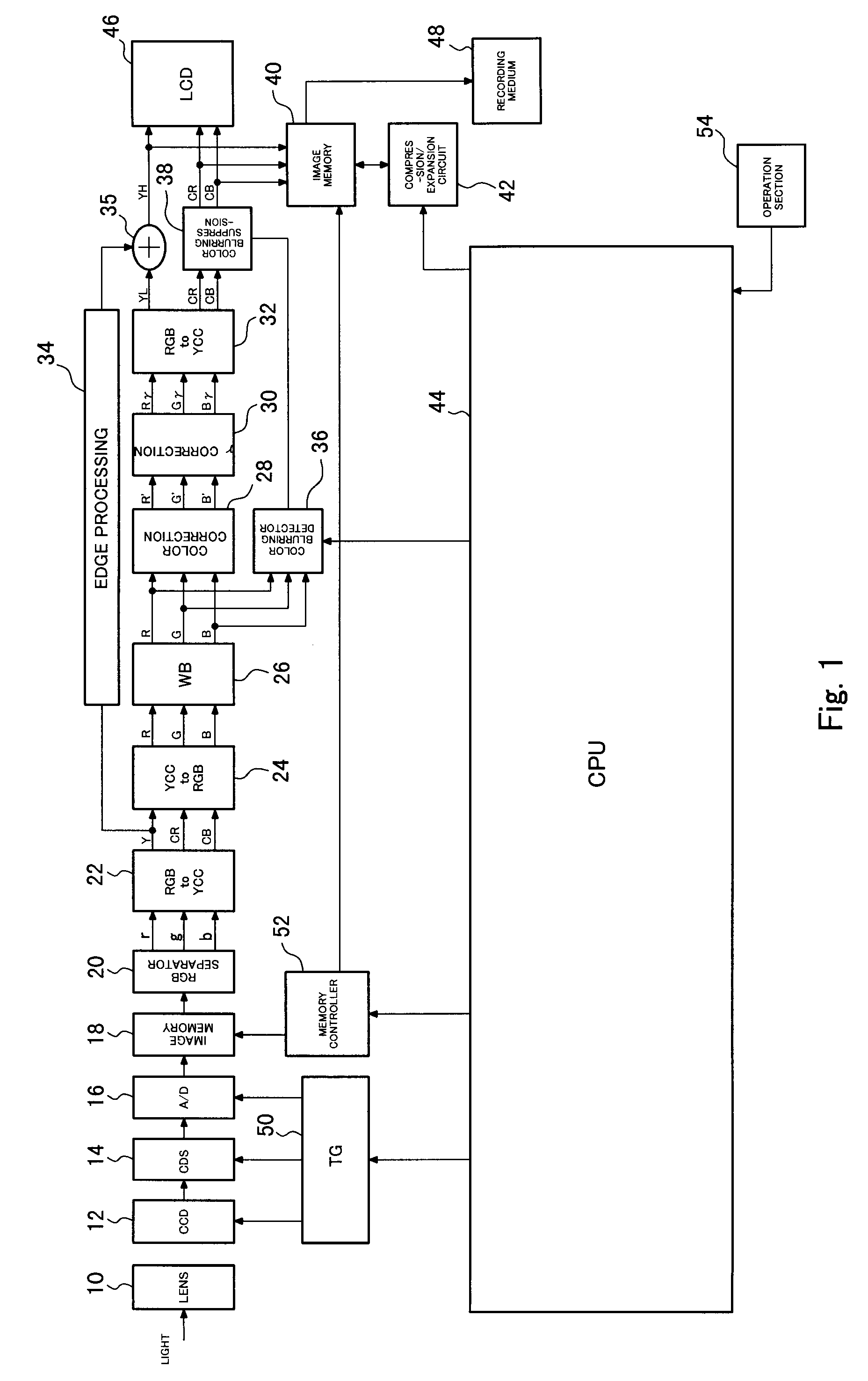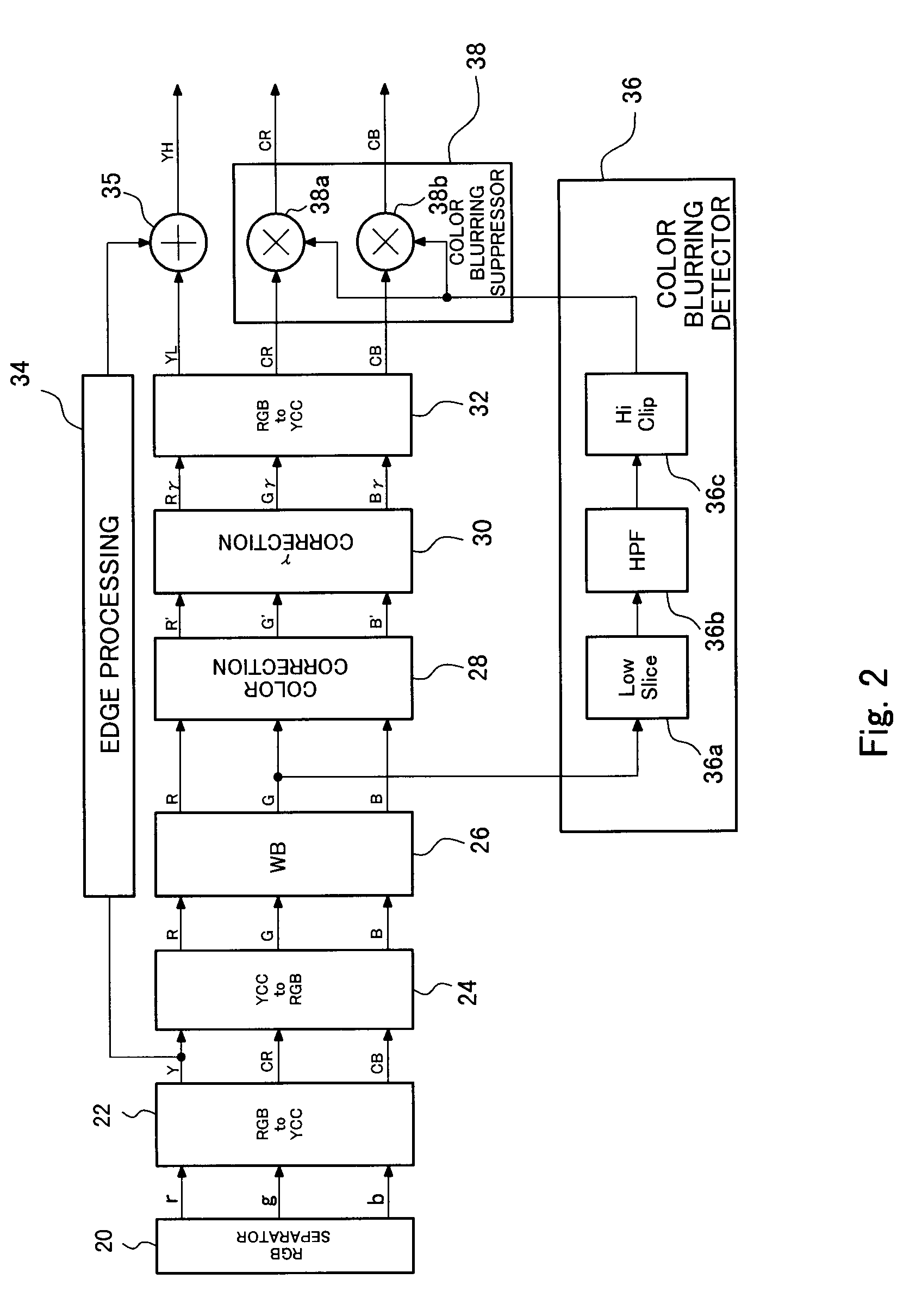Imaging device having chromatic aberration suppression
a chromatic aberration and image technology, applied in the direction of solid-state device signal generators, color signal processing circuits, picture signal generators, etc., can solve the problems of memory capacity, image similarly becomes inferior in sharpness, generating false colors, etc., to achieve accurate suppression of chromatic aberration, improve image quality, and simplify configuration
- Summary
- Abstract
- Description
- Claims
- Application Information
AI Technical Summary
Benefits of technology
Problems solved by technology
Method used
Image
Examples
first embodiment
[0048]FIG. 1 is a block diagram showing the configuration of a digital camera according to a first embodiment of the present invention. A lens 10 induces light originating from a subject to form an image on a CCD 12 which acts as an imaging element. The CCD 12 has a color filter of a Bayer pattern; subjects subject light to photoelectric conversion to thereby generate an image signal; and supplies the image signal to a CDS 14. The CDS 14 subjects the image signal from the CCD 12 to correlation dual sampling and supplies the thus-sampled signal to an analog-to-digital (A / D) converter 16. The A / D converter 16 converts the image signal into a digital signal, and stores the thus-converted digital signal into image memory 18. The CCD 12, the CDS 14, and the A / D converter 16 operate in synchronism with a clock signal supplied from a timing generator (TG) 50. Reading and writing of data from and to the image memory 18 are controlled by a memory controller 52. The image signal read from the...
second embodiment
[0055]FIG. 4 shows the configuration of the color-blurring detection circuit (chromatic aberration detection circuit) 36 of a second embodiment. The color-blurring detection circuit 36 shown in FIG. 2 is additionally provided with a high clip circuit 36d and a multiplying circuit 36e. As in the case of FIG. 2, the G signal output from the white balance adjustment circuit 26 is supplied to the low slice circuit 36a, and to the high clip circuit 36d as well.
[0056]The high clip circuit 36d clips the high level of the G signal and supplies the thus-clipped signal to the multiplying circuit 36e. The clip level of the high clip circuit 36d is identical with the slice level of the low slice circuit 36a. The multiplying circuit 36e multiplies the G signal clipped by the high clip circuit 36d by the signal (see FIG. 3D) output from the high clip circuit 36c.
[0057]When color-blurring of the edge portion of highlight is suppressed, the level of the G signal sometimes does not sufficiently dec...
third embodiment
[0058]FIG. 5 shows the configuration of the color-blurring detection circuit (chromatic aberration detection circuit) 36 of a third embodiment. The color-blurring detection circuit 36 shown in FIG. 2 is additionally provided with a low slice circuit 36f, a high-pass filter 36g, a low clip circuit 36h, and an inverter 36i, all of which are intended for processing the B signal, as well as with the multiplying circuit 36e. As in the case of the circuit shown in FIG. 2, the G signal output from the white balance adjustment circuit 26 is supplied to the low slice circuit 36a, and the B signal is supplied to the low slice circuit 36f.
[0059]The low slice circuit 36f and the high-pass filter 36g have the same functions as those of the low slice circuit 36a and the high-pass filter 36b, and extract the edge portion of highlight of an input signal. The low slice circuit 36f and the high-pass filter 36g extract the edge portion of highlight of the B signal rather than the edge portion of high...
PUM
 Login to View More
Login to View More Abstract
Description
Claims
Application Information
 Login to View More
Login to View More - R&D
- Intellectual Property
- Life Sciences
- Materials
- Tech Scout
- Unparalleled Data Quality
- Higher Quality Content
- 60% Fewer Hallucinations
Browse by: Latest US Patents, China's latest patents, Technical Efficacy Thesaurus, Application Domain, Technology Topic, Popular Technical Reports.
© 2025 PatSnap. All rights reserved.Legal|Privacy policy|Modern Slavery Act Transparency Statement|Sitemap|About US| Contact US: help@patsnap.com



